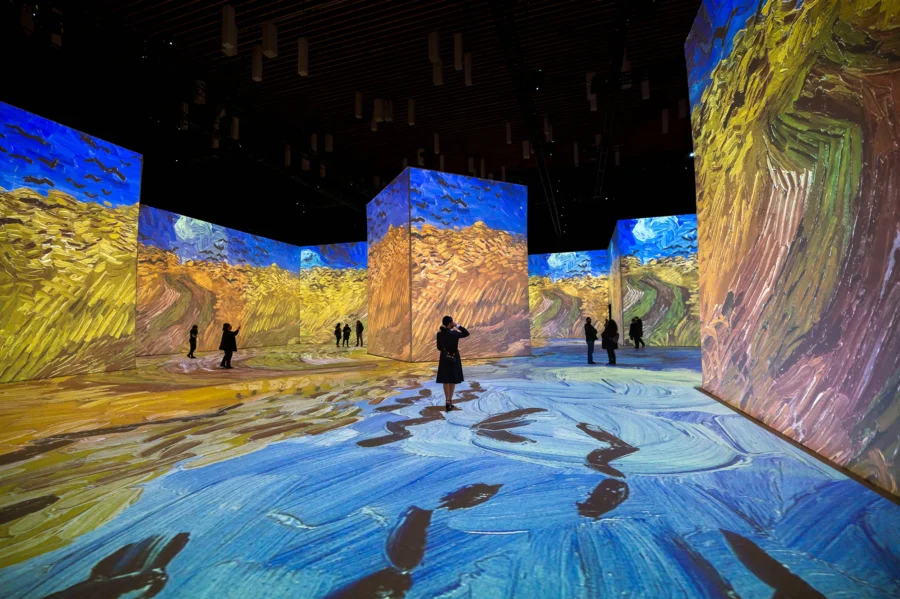Transformation of Art Production and Reception
Digitalization is fundamentally reshaping the art world. Digital art is experiencing a renaissance, dissolving the boundaries between traditional and digital practices. A prominent example is the boom of non-fungible tokens (NFTs): In 2021, digital artist Beeple’s NFT artwork Everydays: The First 5000 Days was sold at Christie’s for USD 69 million, sparking global attention. Such sales have reignited the debate on the definition of art and digital ownership. At the same time, artificial intelligence is emerging as a creative partner. In 2018, a portrait generated by an AI (using a Generative Adversarial Network, or GAN) titled “Edmond de Belamy” was auctioned for USD 432,500. This development raises questions regarding authorship and creativity in the age of machines.
New Digital Gallery Spaces
Virtual and augmented realities now enable immersive art experiences independent of physical location. Museums are employing VR applications to re-present iconic artworks, for example, the Louvre’s initiative “Mona Lisa: Beyond the Glass” allows visitors to experience da Vinci’s masterpiece in virtual reality. Similarly, augmented reality brings street art to life, transforming entire urban environments into interactive open-air galleries. At the same time, social media platforms serve as virtual exhibition spaces. Instagram, in particular, has become a launching pad for emerging artists, enabling them to reach a global audience without the need for traditional galleries. This direct digital sales approach democratizes art presentation, as artists bypass established gatekeepers and diverse voices gain visibility.
Changing Marketing Strategies and Challenges
Online sales platforms and digital art markets are gaining importance. Auction houses now offer live-streamed bidding events, galleries are operating “online viewing rooms,” and, due to the COVID-19 pandemic, up to 25% of art sales temporarily moved online, a dramatic surge in digital transactions. New business models are emerging, such as the tokenization of artworks, where investors can purchase digital shares in physical works. Although this innovation is promising, it is still in its regulatory infancy. Despite these opportunities, challenges remain: copyright issues and digital conservation become more complex, and the high energy consumption associated with blockchain technologies (as used for NFTs) has drawn criticism. Consequently, both artists and developers are seeking more climate-friendly alternatives. Overall, the convergence of art and technology is opening new modes of expression and market models, igniting a global discourse on the nature of art in the 21st century.









